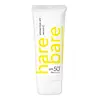What's inside
What's inside
 Key Ingredients
Key Ingredients

 Benefits
Benefits

 Concerns
Concerns

 Ingredients Side-by-side
Ingredients Side-by-side

Water
Skin ConditioningEthylhexyl Methoxycinnamate
UV AbsorberDiethylamino Hydroxybenzoyl Hexyl Benzoate
UV FilterPentylene Glycol
Skin ConditioningDipotassium Glycyrrhizate
HumectantSqualane
EmollientAscorbyl Glucoside
AntioxidantEnterococcus Faecalis
HumectantTetrahexyldecyl Ascorbate
AntioxidantBis-Glyceryl Ascorbate
AntioxidantPunica Granatum Fruit Extract
AntioxidantHydrogenated Lecithin
EmulsifyingCeramide Ng
Skin ConditioningMalpighia Emarginata Fruit Extract
Skin ConditioningHydrolyzed Grape Fruit Extract
HumectantIsononyl Isononanoate
EmollientBis-Ethylhexyloxyphenol Methoxyphenyl Triazine
Skin ConditioningSodium Acrylate/Sodium Acryloyldimethyl Taurate Copolymer
Emulsion StabilisingTitanium Dioxide
Cosmetic ColorantIsohexadecane
EmollientAluminum Starch Octenylsuccinate
AbsorbentPhenoxyethanol
PreservativeEthylhexylglycerin
Skin ConditioningParfum
MaskingPolysorbate 80
EmulsifyingSodium Dilauramidoglutamide Lysine
HumectantAluminum Hydroxide
EmollientStearic Acid
CleansingXanthan Gum
EmulsifyingSorbitan Oleate
EmulsifyingAmmonium Acryloyldimethyltaurate/Vp Copolymer
Biosaccharide Gum-4
Skin ConditioningTocopherol
AntioxidantT-Butyl Alcohol
PerfumingHelianthus Annuus Seed Oil
EmollientButylene Glycol
HumectantGlycerin
HumectantPolyglyceryl-10 Myristate
Skin ConditioningIsostearic Acid
CleansingSodium Citrate
BufferingCitric Acid
BufferingWater, Ethylhexyl Methoxycinnamate, Diethylamino Hydroxybenzoyl Hexyl Benzoate, Pentylene Glycol, Dipotassium Glycyrrhizate, Squalane, Ascorbyl Glucoside, Enterococcus Faecalis, Tetrahexyldecyl Ascorbate, Bis-Glyceryl Ascorbate, Punica Granatum Fruit Extract, Hydrogenated Lecithin, Ceramide Ng, Malpighia Emarginata Fruit Extract, Hydrolyzed Grape Fruit Extract, Isononyl Isononanoate, Bis-Ethylhexyloxyphenol Methoxyphenyl Triazine, Sodium Acrylate/Sodium Acryloyldimethyl Taurate Copolymer, Titanium Dioxide, Isohexadecane, Aluminum Starch Octenylsuccinate, Phenoxyethanol, Ethylhexylglycerin, Parfum, Polysorbate 80, Sodium Dilauramidoglutamide Lysine, Aluminum Hydroxide, Stearic Acid, Xanthan Gum, Sorbitan Oleate, Ammonium Acryloyldimethyltaurate/Vp Copolymer, Biosaccharide Gum-4, Tocopherol, T-Butyl Alcohol, Helianthus Annuus Seed Oil, Butylene Glycol, Glycerin, Polyglyceryl-10 Myristate, Isostearic Acid, Sodium Citrate, Citric Acid
Cyclopentasiloxane
EmollientEthylhexyl PCA
HumectantDimethicone
EmollientDiisostearyl Malate
EmollientSoy Acid
EmollientZiyu Glycoside I
Skin ConditioningPolyhydroxystearic Acid
EmulsifyingAlumina
AbrasivePEG-8 Dimethicone
EmulsifyingMagnesium Hydride
AntioxidantStearic Acid
CleansingAluminum Hydroxide
EmollientCholesteryl/Behenyl/Octyldodecyl Lauroyl Glutamate
Skin ConditioningPhenoxyethanol
PreservativeSilica
AbrasiveGlycogen
HumectantCholesterol
EmollientCyclopentasiloxane, Ethylhexyl PCA, Dimethicone, Diisostearyl Malate, Soy Acid, Ziyu Glycoside I, Polyhydroxystearic Acid, Alumina, PEG-8 Dimethicone, Magnesium Hydride, Stearic Acid, Aluminum Hydroxide, Cholesteryl/Behenyl/Octyldodecyl Lauroyl Glutamate, Phenoxyethanol, Silica, Glycogen, Cholesterol
Alternatives
Ingredients Explained
These ingredients are found in both products.
Ingredients higher up in an ingredient list are typically present in a larger amount.
Aluminum Hydroxide is a form of aluminum. It can be naturally found in nature as the mineral gibbsite. In cosmetics, Aluminum Hydroxide is used as a colorant, pH adjuster, and absorbent.
As a colorant, Aluminum Hydroxide may add opacity, or reduce the transparency. Aluminum hydroxide is contains both basic and acidic properties.
According to manufacturers, this ingredient is an emollient and humectant. This means it helps hydrate the skin.
In medicine, this ingredient is used to help relieve heartburn and help heal ulcers.
There is currently no credible scientific evidence linking aluminum hydroxide in cosmetics to increased cancer risk.
Major health organizations allow the use of aluminum hydroxide in personal care products and have not flagged it as a carcinogenic risk at typical usage levels.
Learn more about Aluminum HydroxidePhenoxyethanol is a preservative that has germicide, antimicrobial, and aromatic properties. Studies show that phenoxyethanol can prevent microbial growth. By itself, it has a scent that is similar to that of a rose.
It's often used in formulations along with Caprylyl Glycol to preserve the shelf life of products.
Stearic Acid is a fatty acid. It is an emollient, emulsifier, and texture enhancer.
As an emollient, stearic acid helps soften skin. It aids the skin's protective barrier by preventing water loss. It also provides a gentle cleansing effect without stripping away natural oils.
Stearic acid may also be used to enhance the texture of products. It can add volume and stabilize ingredients such as water and oil. This can help water and oil ingredients from separating.
Sources of stearic acid include animal or vegetable fats/oils such as coconut or shea. It can be naturally found in butter, cocoa butter, shea butter, vegetable fats, and animal tallow.
This ingredient may not be Malassezia folliculitis, or fungal-acne safe.
Learn more about Stearic Acid